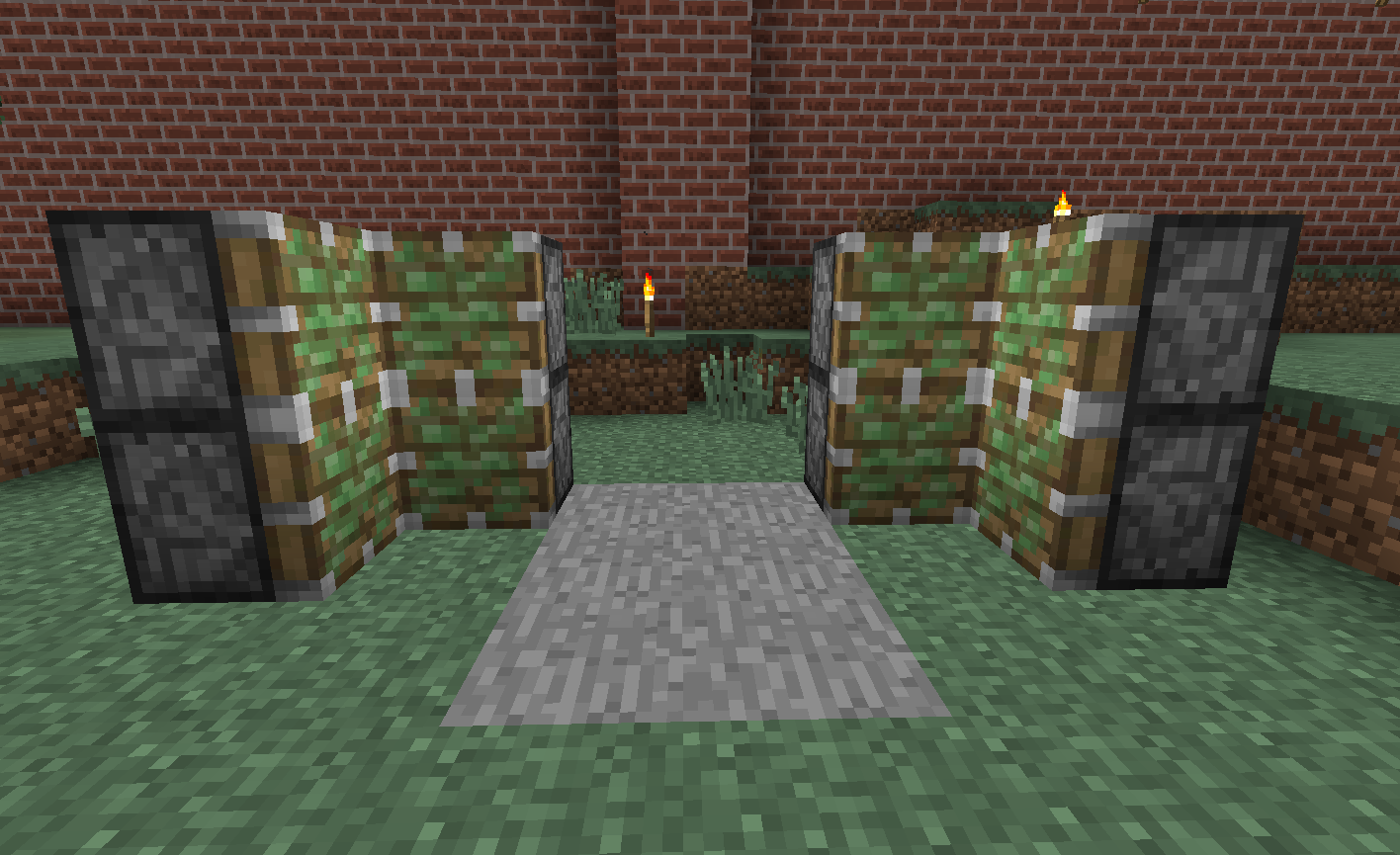The first thing I tried to do when the game added sticky pistons was to make hidden doors. There are lots of different ways to do this, but a number of them have little alcoves or other signs that a door is present. You have to put a lot of thought into placing your door so that it can't be stumbled upon. That lever is also a dead give away, but this is an emergency exit from the city so I don't mind giving away it's location.
Start your doorway with a path 2 blocks wide and 3 blocks deep.
Put 2 stacks of sticky pistons on each side, even with the back 2 rows of the path. The sticky part should face inwards. This is how they'll cover up your doorway, but open it when you flip the lever.
Your next stacks of pistons will face towards you, these will push the hidden face into place when the door is closed.
Then put the stone blocks that will make up the face of the door.
Place blocks on top of the piston stacks and across the door opening. This will run your red stone properly
Redstone dust across the top, with repeaters facing outward. When powered, the power will actually flow down through the stack and power both pistons. You should try an experiment and make the door three blocks high and see if it will still power the whole stack...
If you put a lever in the center, this will allow you to turn on the circuit. Hopefully powering the pistons.
Sure enough, it totally worked! Way to go you have a hidden door! Go turn off the lever.
Oh no!!! It looks like your secret door is busted. It isn't really, we just need to figure out what went wrong. I think you'll find that there needs to be a delay before the pistons on the side fire off, so they can pull your other pistons and stone blocks outward, revealing your opening.
That is the whole reason we put those repeaters in our circuit. If you'll remember, the repeaters not only refresh the power of a circuit but also can input some delays into the circuit. This is the delay you need. Click the repeaters three times each and you'll get the delay you need to have everything work properly.
Flip the switch on and off again a couple times, and you'll see that your doorway is 100% functional.
A switch inside the door is only good if you have another way in. If you place a switch on the other side, this can power it as well and not lock you out of the hidden room. However, if you do something as simple as what is pictured it is way too obvious. People will flip the switch just based off curiosity.
You can also do a daylight sensor if you're crazy and just want the room open during the day.
In the end though, you can do some pretty cool escape routes from your castles, towns, or mines. Keep roving, Rovers.






















































